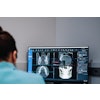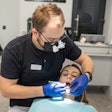Sjögren's syndrome profoundly affects dental care, yet dentists may be overlooking the problem, according to the results of a study on the cover of this month's Journal of the American Dental Association (December 2008, Vol. 139:12, pp. 1592-1601).
Since more than half of the symptoms are oral, dentists often have the first opportunity to diagnose the disease. Yet the average patient in the study suffered for seven years before being diagnosed, the researchers found.
In primary Sjögren's syndrome, the patients' own immune systems attack their salivary and tear glands, causing dryness of the mouth and eyes and increasing their risk of caries as well as B-cell lymphomas. Many also experience inflammatory arthritis and neurological, cutaneous, hematologic, or pulmonary problems.
For the study, researchers from medical centers around the U.S. recruited 1,502 patients -- the largest number of Sjögren's subjects ever studied, they said.
"The results present a compelling argument for the importance of dental health professionals increasing their understanding of [Sjögren's syndrome]," the researchers wrote. Not only are dry mouth, tooth and gum syndrome, and swollen salivary glands some of the most common symptoms, but dentists see their patients more often than other healthcare practitioners, they noted.
Fewer than 8% of the patients in the study were diagnosed by their dentist. However, the authors cautioned that dentists might have identified the symptoms in some patients and then referred them to other specialists -- such as rheumatologists -- for definitive diagnosis. (The American-European Consensus Group criteria are available free from the Annals of Rheumatic Diseases, June 2002, Vol. 61:6, pp. 554-558.)
In fact, the Sjögren's Syndrome Foundation Web site states that "Rheumatologists have primary responsibility for diagnosing and managing Sjögren's syndrome."
Regardless of how they are diagnosed, Sjögren's patients turn frequently to their dentists for help. Those in the study experienced about three times as many dental diseases as did control subjects, visited their dentists about twice as often, and spent about three times as much for dental care.



















